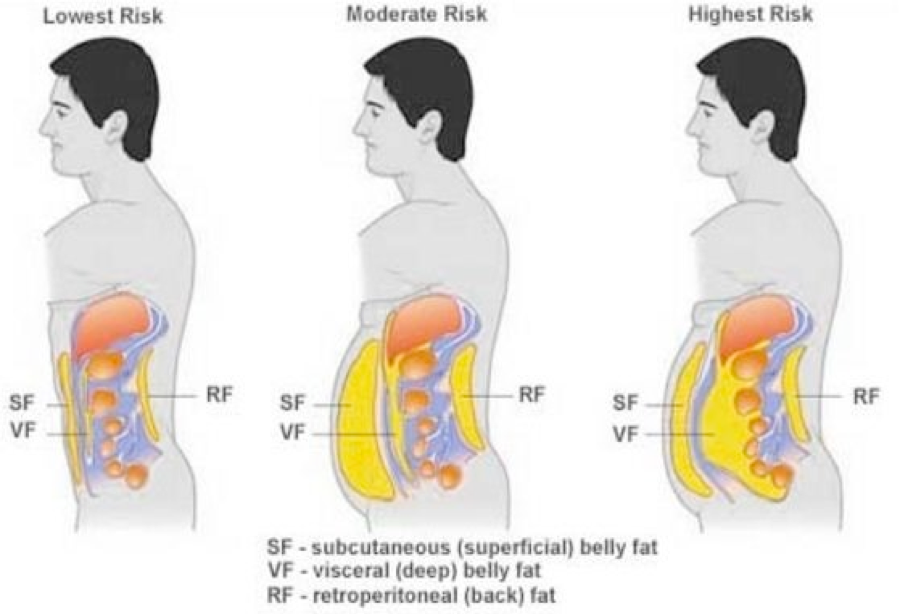Targeting Belly Fat and Preventing Heart Disease
Increased body weight is a risk factor for cardiovascular disease. It increases your risk of high blood pressure, high cholesterol, diabetes, not to mention its impact on your daily life! The main measure used in determining your body weight risk is your waist circumference, which gives us a measure of the largest part of your belly.
There are two main “types” of belly fat we look at in terms of assessing your cardiovascular risk. One is called visceral fat, and the other is called subcutaneous fat. Visceral fat is fat that is deep in your belly, under your abdominal muscles, and lies next to your organs. Subcutaneous fat is the fat covering up your abdominal muscles and lying just under the skin. Ideally, for the lowest risk, we want both types of fat to be low. However, it’s the visceral fat, next to your organs, that puts you at the highest risk.
So how do you know which one you have? Typically if you have a “jiggle” belly, where you can squeeze and grab your belly fat, this means you have more subcutaneous fat. If your belly is big but hard, typically this means you have more visceral fat. So how do we get rid of our belly fat and reduce our risk?

There are lots of trends and fads out there, bombarding us with the next miracle that will melt away our belly fat. The American College of Sports Medicine just released an article which reviewed the scientific research behind a few of the latest trends targeting belly fat.
- Intermittent Fasting
- High Protein Diet
- Paleo Diet
- Green Tea Consumption
Although the media would have you believe these diets have the ability to target belly fat, the evidence based scientific research tells a different story. In fact, to date, none of these diets have stacked up in the research. They may have the potential of assisting with general weight loss, but not in targeting the belly specifically.
Research, however, does tell us that trans and saturated fat (bad fat) are associated with an increase in belly fat, whereas fibre is associated with a decrease in belly fat. Therefore, eating a diet with small amounts of “bad” fat, and an increased amount of fibre, specifically soluble fibre, is a great way to help battle the belly bulge. This way of eating is consistent with heart healthy diets known as the DASH diet, and the Mediterranean diet.
For more information on heart healthy eating, I encourage you to watch our “Heart Health Nutrition Tips” video on our site.
